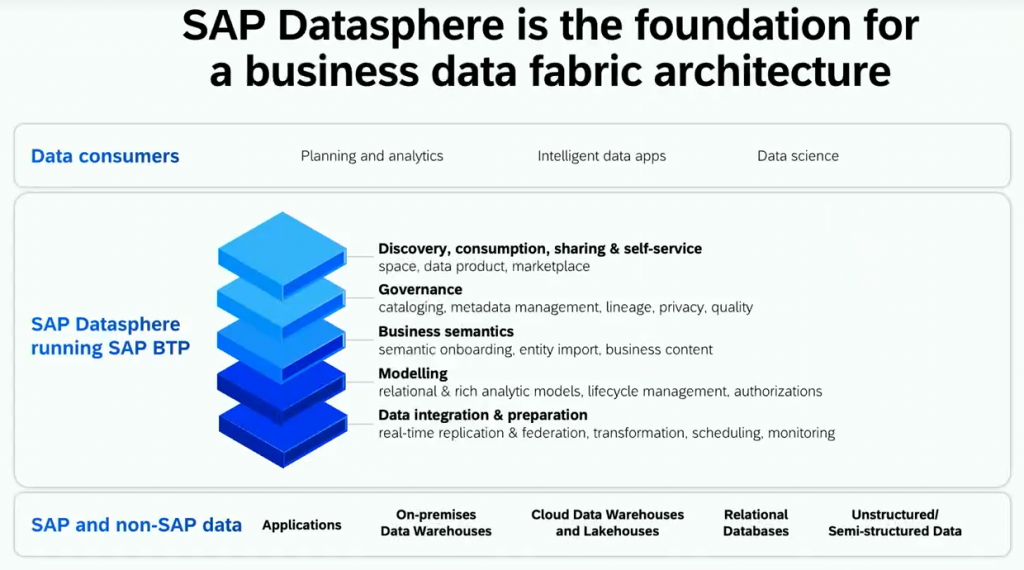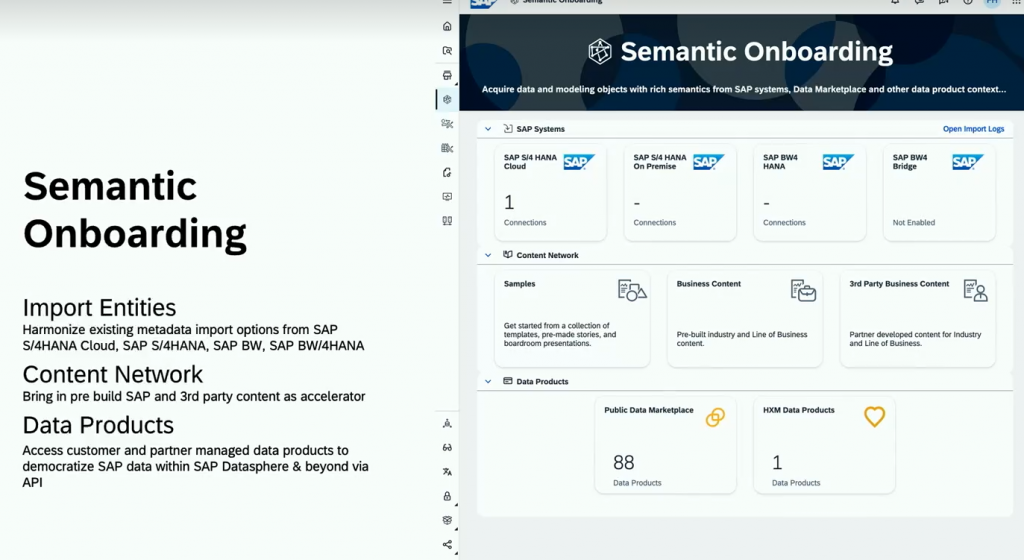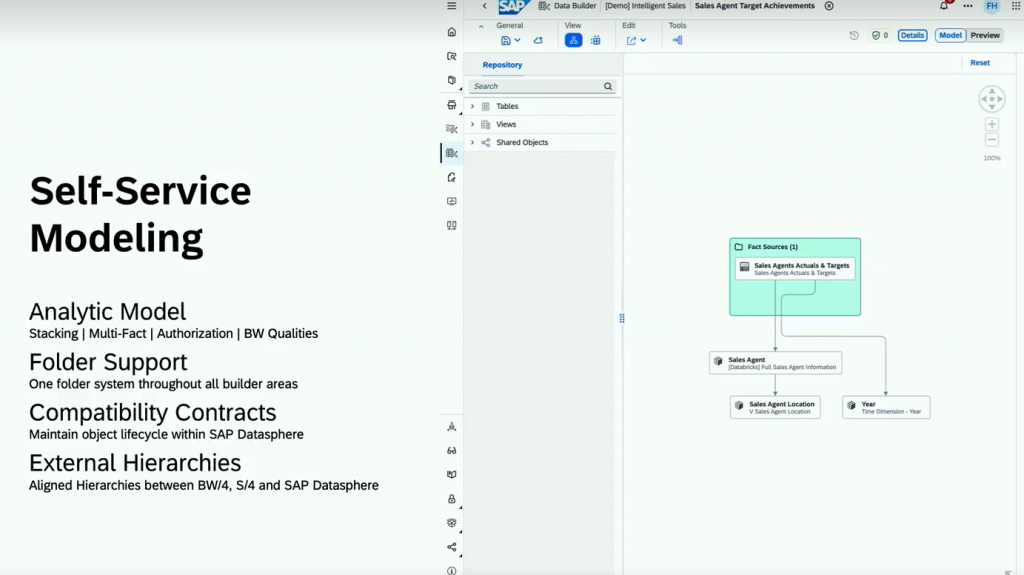SAP Datasphere on Teched 2023: What has been achieved and where are we going?
SAP Teched 2023 is a wrap! Although the amount of sessions around Datasphere on Teched 2023 was limited, the overview session by Fabian Hartje (Head of Product Management) and Hagen Jander (Vice President Product Management & Strategy) was packed with forward-looking insights and a clear vision on the strategy of the product. Let’s delve into how SAP Datasphere continues to innovate in the realm of data management and analytics.
The strategy of SAP Datasphere
Since the renaming of SAP Datawarehouse Cloud into SAP Datasphere the term “data fabric” has been introduced by SAP. Data fabric, as described by SAP, is about integrating and harmonizing data across various sources in the organization, applying a strong governance, and on top the application of semantics, resulting in data products for consumers. Obviously SAP Datasphere stays the best solution to achieve a business data fabric in the SAP ecosphere.

SAP Datasphere as business data fabric.
Openness
Next to the strong focus on the data fabric there are two more topics that are vital in the strategy of SAP Datasphere the first one being: openness. This topic was already at the heart of SAP Datasphere from the very start. SAP is working closely with their “competitors” to achieve an “open-ecosystem”, resulting in a large amount of connectors to environments like Databricks, Confluent, Collibra and Google Cloud. On the other hand, since the start it has been easier than ever in a SAP tool to get data out of the system via OpenSQL or the creation of Odata connections.
Self-service
Self-service is the final topic that is in the strategy of SAP for SAP Datasphere. Obviously, SAP Datawarehouse Cloud started as a “business datawarehouse”, but has been promoted in the last few years to the successor of SAP BW, resulting also in the rebranding to SAP Datasphere. Although self-service is maybe a bit far-fetched, it is the case that the graphical flows in SAP Datasphere are intuitive and accessible for the somewhat experienced business user.
BW Bridge
As described earlier, SAP Datasphere has been promoted to be the successor of SAP BW. Not easy shoes to fill as there has been over twenty-five years of development into SAP BW, which obviously can not be rebuild into a new product overnight. We have seen the last few months that features were released which not always directly made sense, but had to be created for a smooth migration process, with the transformation flow and delta-table as the latest additions to SAP Datasphere. In the overview session Fabian Hartje, Head of Product Management for SAP Datasphere, clearly describes the importance for SAP to be able to leverage all the history, that has been build into your SAP BW system, when you migrate to SAP Datasphere. And this is in both data and objects, but even more important: the semantics (read InfoObjects).

Semantic Onboarding and Content Network
Content Network
Another part that SAP keeps the focus on is the Content Network. Basically the Content Network can be compared with the old Business Content that was available for SAP BW. The biggest difference is that it is now also possible for creators outside of SAP to deliver there Business Content to the Content Network so it can be used (for free or paid) by other SAP Datasphere environments.
Analytic Model
The analytic model, that was released beginning of this year, has been promoted as the (new) reporting component in the SAP architecture. There is much to come for the Analytic Model with the introduction of multi-fact models, stacking-support, leveraging of authorizations and of course exception aggregations and non-cumulative key-figures. The biggest surprise to me was the mention of Exit Variables, as this was one of the most important functions in SAP BW, that up until now was not possible to achieve in SAP Datasphere.

Analytic Model and Folder Support
Folder support
This shouldn’t deserve its own paragraph, but it does get it. As of next year we can expect folder support to be introduced on the Data Builder side. This is a feature that everyone was highly requesting since there are a lot of objects in a space in bigger systems. One of the clients we are currently working with has 1100 objects, and growing, in one space. Even with a well thought out naming convention it gets harder and harder to quickly find your objects with that many available objects.
Compatibility Contracts
One of the other things we are currently struggling with is the lack of version control in SAP Datasphere. Fabian describes this as “we need to get away from the break-and-fix mentality”, which is definitely what you sometimes experience when working without version control. With the new brought in version control, under the name of compatibility contracts, this problem should be solved!
Conclusion
As you can see from the length of this blog: even though the SAP Datasphere overview session was only 30 minutes long, there was plenty to be told. There is much to look forward to in the upcoming period when it comes to new functionalities and the maturing of the product of SAP Datasphere as a whole.

